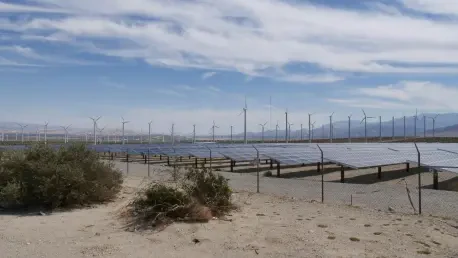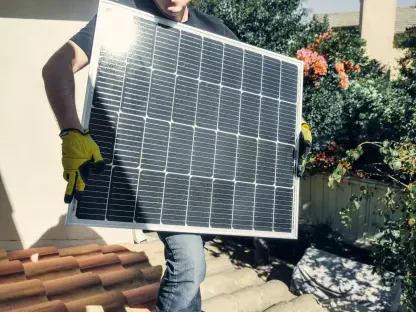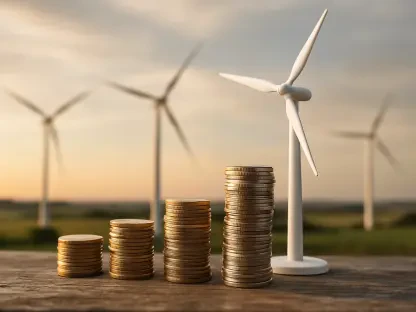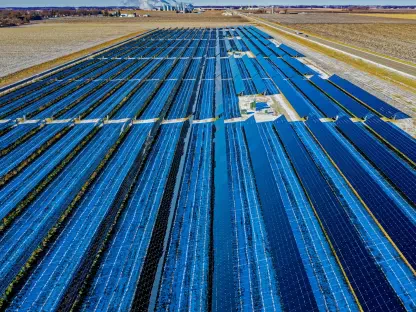In today’s interview, we have the pleasure of speaking with Christopher Hailstone, an expert in energy management and renewable energy technologies. With a deep understanding of grid reliability and the nuances of utility operations, Christopher provides invaluable insights into the future of solar and wind energy in the United States, amidst political challenges and evolving energy policies.
The expected growth in solar generation for this summer is quite remarkable. Can you walk us through the projections?
The Energy Information Administration has indeed shared promising forecasts for solar generation. This summer, we’re looking at a 34% increase in solar power output compared to the same period last year. The total solar generation for this summer is expected to reach 124 billion kilowatt-hours (kWh), marking significant growth.
What are the driving factors behind such a substantial increase in solar generation?
Several elements contribute to this surge. Primarily, the expansion is due to the installation of more solar capacity across the country. As solar panels become more efficient and less expensive, more businesses and households are now opting for solar solutions. Additionally, policy directions—despite some federal resistance— at state and local levels are supporting renewable energy development and grid integration.
With more solar capacity installations happening, how have recent trends in energy generation been influenced?
In recent years, the trend has decisively shifted towards enhancing renewable energy sources like solar. This expansion has resulted in solar challenging and even surpassing other renewables like wind and hydropower in certain periods. Importantly, this trend allows solar energy to play a central role in summer energy generation, indicating a stable future trajectory.
What are EIA’s predictions for solar generation by the upcoming summers, particularly 2026?
The projections for 2026 are equally encouraging. The EIA anticipates solar generation will reach up to 147 billion kWh by the summer of 2026, reflecting a growth rate of approximately 19% from 2025. This would firmly position solar as a leading renewable energy source, surpassing wind power during the summer months.
What does the EIA anticipate for wind energy generation this summer?
Wind energy remains a strong contender, with expectations to generate about 130 billion kWh this summer. Although not outpacing solar, wind contributes significantly to the renewable energy landscape, fostering diversity within America’s energy portfolio.
How is the increase in solar generation affecting the use of natural gas for electricity?
The rise in solar generation has led to a decrease in natural gas usage in some regions, with solar absorbing a larger share of the energy demand. As renewables become more prevalent, natural gas generation is projected to fall by 4% in 2025, though a slight rebound is expected in 2026.
Can you elaborate on the anticipated changes in U.S. natural gas generation in 2025 and 2026?
The EIA predicts that natural gas generation will decline by 4% in 2025. This reduction is largely due to increased renewable generation and higher fuel costs. However, the slight increase of 2% expected in 2026 suggests a continued need for natural gas as a complementary energy source amidst expanding renewables.
How has the Trump administration’s stance affected advancements in renewable energy?
Despite the administration’s reluctance towards renewables, the sector has shown resilience, driven by technological advancements and market forces. Initiatives at localized levels have mitigated some federal policy challenges, allowing renewable projects to progress despite opposition.
Can you describe the recent executive order from President Trump regarding wind and solar energy?
President Trump’s executive order seeks to impose further restrictions on the development of wind and solar projects. This move aligns with efforts to bolster coal and natural gas, indicating an attempt to reshape the energy landscape to favor more traditional methods.
What are the implications of reduced clean energy tax credits like the 45Y and 48E?
The reduction in these tax credits poses a significant barrier to renewable energy projects. These incentives are crucial for reducing upfront investment costs, and their reduction could slow down new installations and decrease the momentum we’ve witnessed in renewables expansion.
There seem to be criticisms surrounding the administration’s view on renewable energy. Could you speak to these?
Critics argue that the administration is undervaluing the benefits of variable renewable resources. They emphasize that these resources enhance grid reliability and sustainability, contrary to claims that they diminish economic and environmental quality.
How are variable resources such as wind, solar, and battery storage helping with grid reliability?
These resources significantly bolster grid reliability by providing flexible and decentralized power. Solar and wind, paired with battery storage, offer efficient responses to changing power demands, helping to stabilize the grid during peak times.
What insights were shared in the Department of Energy’s report on blackout risks in the future?
The DOE’s report painted a rather alarming picture, suggesting a potential 100-fold increase in blackout risks by 2030. The factors contributing to this include load growth, plant retirements, and higher penetrations of renewable generation, which demand adaptive management strategies.
How does the DOE’s study assess the potential increase in blackouts by 2030?
The study hints at exaggerated risk, perhaps overlooking the robust potential of renewables and storage technologies to prevent such scenarios. Critics suggest that the report might not fully take into account technological advancements that could mitigate risks.
What criticisms have arisen regarding the DOE’s blackout risk study?
There has been backlash concerning the study’s assumptions, with claims that it undervalues contributions of renewable energy resources. Analysts argue that innovations in grid management and energy storage offer more optimistic scenarios than the study proposes.
What is your forecast for the future of renewable energy in the U.S.?
Looking ahead, I see continued growth in renewable energy as inevitable, driven by both technological progress and economic dynamics. Despite political challenges, the shift towards cleaner energy is solid, and renewables will increasingly define America’s energy mix.









